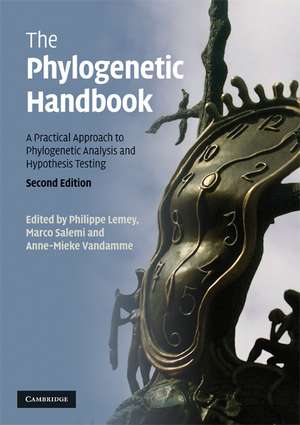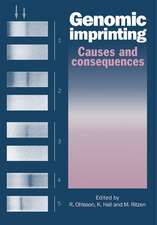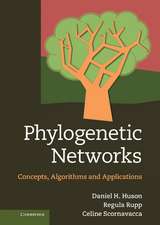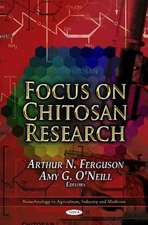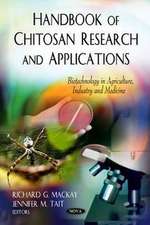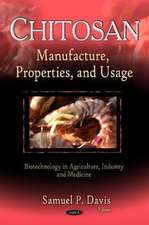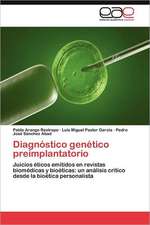The Phylogenetic Handbook: A Practical Approach to Phylogenetic Analysis and Hypothesis Testing
Editat de Philippe Lemey, Marco Salemi, Anne-Mieke Vandammeen Limba Engleză Paperback – 25 mar 2009
Preț: 472.48 lei
Preț vechi: 530.88 lei
-11% Nou
Puncte Express: 709
Preț estimativ în valută:
90.44€ • 98.27$ • 76.02£
90.44€ • 98.27$ • 76.02£
Carte tipărită la comandă
Livrare economică 21 aprilie-05 mai
Preluare comenzi: 021 569.72.76
Specificații
ISBN-13: 9780521730716
ISBN-10: 0521730716
Pagini: 750
Ilustrații: 57 b/w illus. 18 tables
Dimensiuni: 174 x 247 x 34 mm
Greutate: 1.45 kg
Ediția:2 Rev ed.
Editura: Cambridge University Press
Colecția Cambridge University Press
Locul publicării:Cambridge, United Kingdom
ISBN-10: 0521730716
Pagini: 750
Ilustrații: 57 b/w illus. 18 tables
Dimensiuni: 174 x 247 x 34 mm
Greutate: 1.45 kg
Ediția:2 Rev ed.
Editura: Cambridge University Press
Colecția Cambridge University Press
Locul publicării:Cambridge, United Kingdom
Cuprins
Part I. Introduction: 1. Basic concepts of molecular evolution Anne-Mieke Vandamme; Part II. Data Preparation: 2. Sequence databases and database searching Guy Bottu, Marc Van Ranst and Philippe Lemey; 3. Multiple sequence alignment Des Higgins and Philippe Lemey; Part III. Phylogenetic Inference: 4. Nucleotide substitution models Korbinian Strimmer, Arndt von Haeseler and Marco Salemi; 5. Phylogenetic inference based on distance methods Yves Van de Peer and Marco Salemi; 6. Phylogenetic inference using maximum likelihood methods Heiko A. Schmidt and Arndt von Haeseler; 7. Bayesian phylogenetic analysis using MRBAYES Fredrik Ronquist, Paul van der Mark and John P. Huelsenbeck; 8. Phylogeny inference based on parsimony and other methods using PAUP* David L. Swofford and Jack Sullivan; 9. Phylogenetic analysis using protein sequences Fred R. Opperdoes and Philippe Lemey; Part IV. Testing Models and Trees: 10. Selecting models of evolution David Posada; 11. Molecular clock analysis Philippe Lemey and David Posada; 12. Testing tree topologies Heiko Schmidt; Part V. Molecular Adaptation: 13. Natural selection and adaptation of molecular sequences Oliver G. Pybus and Beth Shapiro; 14. Estimating selection pressures on alignments of coding sequences Sergei L. Kosakovsky Pond, Art F. Y. Poon, and Simon D. W. Frost; Part VI. Recombination: 15. Introduction to recombination detection Philippe Lemey and David Posada; 16. Detecting and characterizing individual recombination events Mika Salminen and Darren Martin; Part VII. Population Genetics: 17. The coalescent: population genetic inference using genealogies Allen Rodrigo; 18. Bayesian evolutionary analysis by sampling trees Alexei Drummond and Andrew Rambaut; 19. LAMARC: estimating population genetic parameters from molecular data Mary K. Kuhner; Part VIII. Additional Topics: 20. Assessing substitution saturation with DAMBE Xuhua Xia and Philippe Lemey; 21. Split networks: a tool for exploring complex evolutionary relationships in molecular data Vincent Moulton and Katharina T. Huber.
Recenzii
"This impressive handbook provides unparalleled coverage of the practice of turning genetic data into sensible statements about evolutionary history and processes. Intended as a hands-on resource for the student or professional scientists who wishes to master basic phylogenetic concepts and get to grips with the software - in this regard it succeeds admirably."
- Mike Steel, Biometrics
- Mike Steel, Biometrics
Descriere
A broad, hands on guide with detailed explanations of current methodology, relevant exercises and popular software tools.
